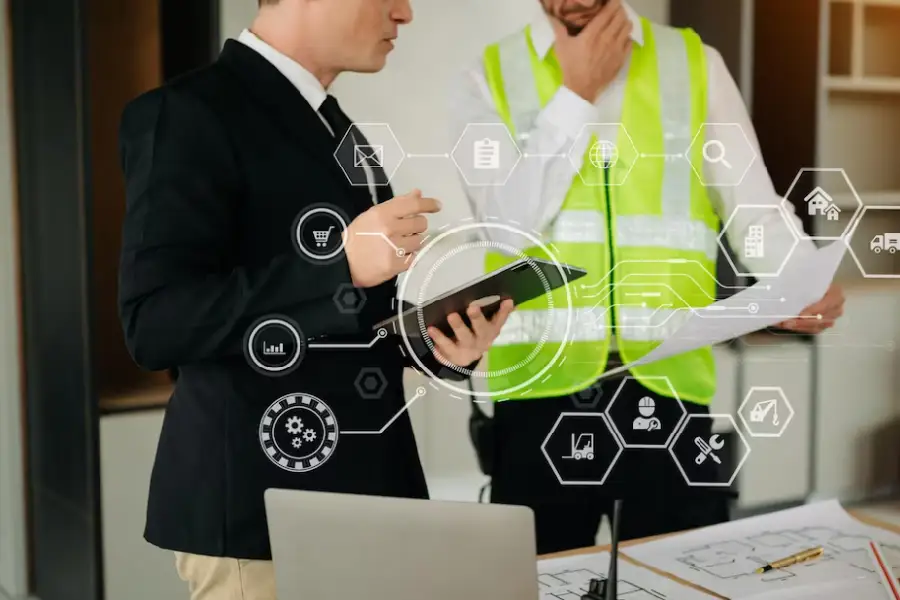Optimize Performance and Safety And Security: Ideal Practices in Facility Monitoring
In today's quickly developing landscape, optimizing effectiveness and security in center monitoring has actually become a vital focus for organizations striving to boost functional performance. By incorporating wise innovation, prioritizing upkeep methods, and promoting a culture of safety, center managers can dramatically boost both efficiency and compliance.
Embrace Smart Technology

Executing wise sensors and automation systems enables accurate tracking of ecological problems, occupancy degrees, and equipment performance. This data-driven strategy not only educates decision-making but additionally sustains predictive upkeep, minimizing downtime and expanding property life. Moreover, clever innovation improves individual experience by producing adaptive settings that respond to the demands of residents.
Incorporating smart systems additionally promotes sustainability efforts, such as energy-efficient lights and heating and cooling systems, adding to minimized carbon impacts. By embracing these innovations, facility supervisors can make certain that their operations stay affordable, resilient, and lined up with modern sustainability objectives. Inevitably, the shift towards wise modern technology stands for a transformative step in redefining center monitoring for a more lasting and effective future.
Prioritize Regular Maintenance
Normal upkeep is crucial for guaranteeing the longevity and efficiency of center procedures. A well-structured upkeep program not only prolongs the life of devices and facilities yet additionally lowers the likelihood of unexpected failures that can disrupt operations. By prioritizing routine maintenance, facility managers can determine prospective problems early, enabling for timely interventions that reduce expensive repair work and downtime.
Establishing a regular upkeep routine is necessary. This must consist of routine examinations, maintenance, and required repair work for all equipment, HVAC systems, pipes, and electric systems. Using a computerized upkeep administration system (CMMS) can improve this process, supplying tracking and notifies for upcoming maintenance tasks.
Moreover, cultivating a society of responsibility amongst team improves the effectiveness of upkeep efforts. Training employees to acknowledge and report maintenance issues can bring about positive administration instead of responsive reactions. In addition, recording maintenance tasks ensures conformity with safety laws and supplies important understandings for future preparation.
Implement Safety Training Programs
A thorough security training program is important for cultivating a safe workplace in any center. Facility Management. Such programs gear up employees with the understanding and skills needed to identify dangers, execute safety and security procedures, and react efficiently in emergency situations. By prioritizing safety and security training, organizations can substantially reduce the danger of accidents and injuries, therefore enhancing total productivity
To carry out an effective safety and security training program, it is important to customize the content to the certain requirements of the facility and its procedures. This consists of carrying out an extensive danger analysis to identify prospective dangers unique to the work environment. Training needs to incorporate a selection of topics such as proper tools use, emergency emptying treatments, and first help strategies.
Moreover, it is important to involve employees proactively throughout training sessions. Making use of real-life circumstances and hands-on presentations can improve understanding and retention of safety methods. Routine correspondence course need to also be scheduled to maintain safety and security recognition at the forefront.
Optimize Space Utilization
Reliable room application is a critical component of center management that directly impacts functional performance and cost-effectiveness. Organizations often have problem with underutilized or overcrowded areas, leading to inefficiencies and boosted costs. To enhance area utilization, center supervisors need to carry out regular analyses to recognize just how spaces are currently being this post made use of and where improvements can be made.
Executing flexible work space designs, such as open workplace formats or modular furnishings, can substantially improve adaptability to changing requirements. Additionally, leveraging modern technology, such as space administration software, can offer important insights right into occupancy patterns and help recognize underused locations.

Establish Clear Interaction Channels
Maximizing area utilization typically discloses the need for durable communication techniques within a facility. Clear interaction channels are critical for promoting effective cooperation amongst team, maintenance groups, and management. By developing these networks, facility managers can make sure that details flows perfectly relating to room usage, operational adjustments, and safety procedures.
Implementing a multi-faceted communication strategy-- combining electronic systems, such as emails and team cooperation tools, with face-to-face communications-- can significantly improve involvement and information dissemination. Routine conferences must be arranged to go over recurring projects, address issues, and share updates. In addition, developing a centralized info center, such as an intranet, permits staff members to accessibility important documents and announcements easily.
Moreover, responses mechanisms are necessary to assess the performance of interaction strategies. Encouraging personnel to share their understandings can bring about renovations and foster a culture of openness. Educating programs focused on communication abilities can better empower employees to convey details plainly and properly.
Eventually, establishing clear communication channels not just maximizes find this effectiveness but additionally enhances security by guaranteeing that everyone is notified and lined up with the facility's operational goals.

Verdict
In final thought, the integration of smart modern technology, routine maintenance, extensive security training, maximized area utilization, and reliable communication channels jointly enhances performance and safety in facility monitoring. These ideal methods serve as crucial elements for reliable facility management.
In today's quickly advancing landscape, making the most of performance and safety in center administration has actually come to be a crucial emphasis for companies striving to enhance operational efficiency. By incorporating clever modern technology, prioritizing maintenance procedures, and promoting a culture read more of security, center supervisors can considerably enhance both productivity and compliance.To carry out a reliable safety training program, it is important to tailor the web content to the details needs of the center and its operations. By developing these channels, center managers can make sure that info streams effortlessly regarding space use, functional modifications, and safety and security protocols.
In conclusion, the assimilation of smart technology, routine upkeep, detailed security training, optimized area utilization, and reliable communication networks collectively improves performance and safety and security in center management. - Facility Management